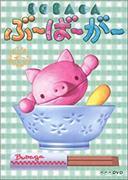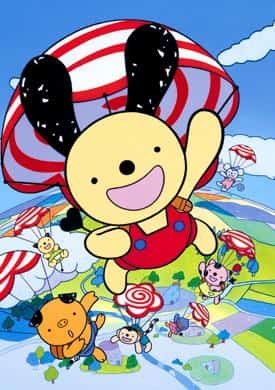The appeal and reviews of Kachikachi Yama (Sea and Mountain Edition): A deep look into the story and characters

Kachikachi Yama (Sea and Mountain Edition) - An anime with a deep history and charmKachikachi Yama (Sea and Mountain Edition) is an animated film released on January 1, 1934, known for its unique storyline and beautiful visuals. This work is an original anime and is not derived from other media. Below, we will introduce detailed information and appeal of this work, and also delve deeper into its background and related information. OverviewKachi Kachi Yama (Sea/Mountain Edition) is a one-episode short animation. The release medium is listed as "other," suggesting that it was released in a special form rather than in a typical movie theater or on television. The work is based on the traditional Japanese folktale "Kachi Kachi Yama," but by setting it in two different environments, the sea and the mountains, it creates an original story. storyThe story of Kachi Kachi Yama (Sea and Mountain Edition) centers around the conflict between a raccoon dog and a rabbit. The tale begins with the raccoon dog breaking into the house of an elderly couple and stealing food. After incurring the ire of the couple, the raccoon dog is cornered by the rabbit, and an epic chase unfolds across the sea and mountains. Using his cleverness, the rabbit traps the raccoon dog and ultimately succeeds in punishing it. This work depicts the conflict between good and evil and the importance of wisdom, leaving viewers deeply moved. Visuals and MusicThe visuals of Kachi Kachi Yama (Sea and Mountain Chapters) are very sophisticated considering the state of the art in 1934. Beautiful landscapes of the sea and mountains are depicted, and the colorful animation enhances the visual appeal. Music is also an important element in enhancing the atmosphere of the work, with background music using traditional Japanese instruments playing in sync with the development of the story. The music, especially in the chase scenes, has the power to draw the viewer in, building tension. Historical backgroundThe year 1934, when Kachi Kachi Yama (Sea and Mountain Edition) was released, was a time when the Japanese film industry was developing rapidly, and animation played a part in that. This work was a crystallization of the technology and artistry of the time, and had a major influence on later animation works. In addition, the story, based on a folk tale, symbolizes the fusion of tradition and modernity in Japanese society at the time. Related works and influencesKachi Kachi Yama (Sea and Mountain Edition) had a huge influence on subsequent animation works. In particular, there are many works depicting the conflict between raccoon dogs and rabbits, and its influence can be seen in modern animation. This work can also be said to be a pioneer in the animation of Japanese folk tales, paving the way for later works such as "Momotaro" and "Urashima Taro." Recognition and AwardsKachi Kachi Yama (Sea and Mountain Edition) was highly acclaimed when it was released, especially for its visuals and storytelling. Although the specific awards it received are unclear, it certainly received high praise from film critics and audiences at the time. The film also occupies an important place in Japan's cultural heritage, and is still loved by many fans today. Recommendations and how to watchKachi Kachi Yama (Sea and Mountain Edition) is a work that can be recommended to a wide range of audiences as a classic animation work and a story based on a Japanese folk tale. In particular, it is a work that can be enjoyed by both children and adults, making it perfect for watching with the family. It is currently available to watch on DVD or online streaming services. It is also sometimes screened at special animation exhibitions held at museums and art galleries, so it is a good idea to take advantage of these opportunities. Related information and supplementsThe following information is related to Kachi Kachi Yama (Sea and Mountain Edition):
ConclusionKachi Kachi Yama (Sea and Mountain Edition) is an animated film released in 1934, and is still loved by many fans today for its historical background, artistic quality, and appealing story. This work deeply moves viewers with its fusion of a story based on a Japanese folk tale, beautiful visuals, and music. Please watch this work and experience its charm for yourself. |
<<: Tonochan's Prank: Exploring the Depths of Charming Characters and Stories
>>: Air Raid vs. Air Defense: Appreciating the Blend of Tactics and Drama
Recommend
The PV of the new film "Your Color" directed by "A Silent Voice" is released, and Yui Aragaki will join the dubbing
Naoko Yamada, the director of animations such as ...
Disney registers "Mulan" for Oscars and participates in 15 awards
Disney has registered "Mulan" for the O...
New poster of the movie "Jiang Ziya" released: Fox-eared girl demon queen Daji
The animated film "Jiang Ziya" will be ...
A thorough review of ZIGGY's "Soreike! R&R BAND"!
ZIGGY Let's go! R&R BAND - Ziggy Let'...
The appeal and evaluation of "Peeban": A deep review
Peaban - Humor and adventure in the world of pigg...
The movie "Whiplash" is scheduled to be released on December 6th on the National Art Federation's special line
Sina Films reported today (November 28) that Whip...
Thor 3 director's Star Wars movie won't feature old characters
"Thor 3" director Taika Waititi discuss...
A thorough review of "LET'S Nupunupu"! Is this anime really interesting?
"LET'S Nupu-nupu" - A short anime w...
Impressions and reviews of MOONLIGHT MILE 2nd season "Touch down": A challenge to space and an impressive landing
MOONLIGHT MILE 2nd Season Touch Down - Moonlight ...
Production on the third installment of Sicario begins! Benicio returns to the cast
Although the writers' strike is ongoing and t...
The domestic animation "Star Change" was launched today and the number of views has exceeded 100 million
The Chinese animation "Star Change", ad...
Anime Expo Lite violates YouTube terms before it even starts
Anime Expo Lite, an online event held by the Japa...
The new work "Vanitus' Notes" by "Pandora Heart" author Jun Mochizuki has a new PV released and will be broadcast in July
According to the new news released by the officia...
Starring Takeshi Kitano! Special remake of classic mystery drama "The Dot and the Line" announced
The classic mystery drama "Points and Lines&...
The appeal and reviews of "Yoiko": An anime experience not to be missed
"Yoiko": The charm and full story of th...









